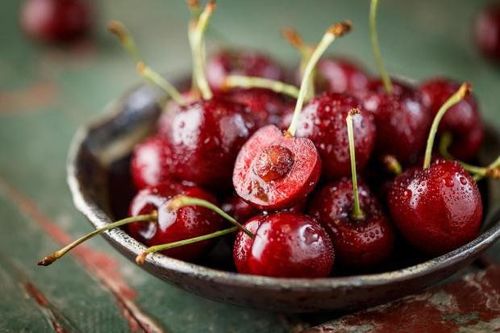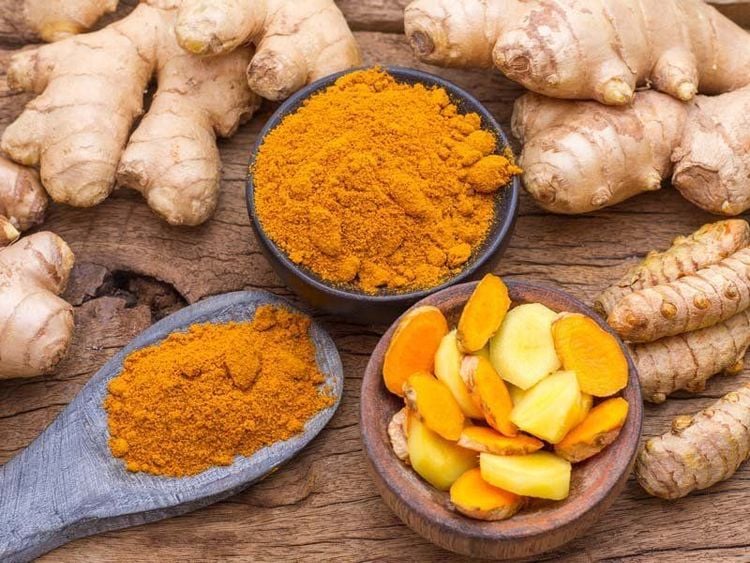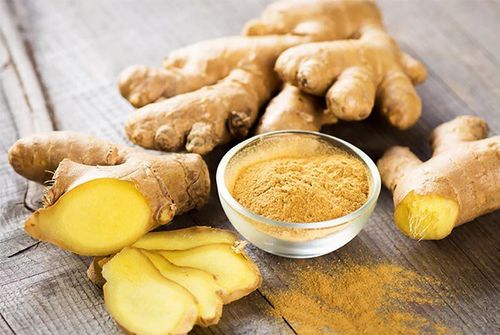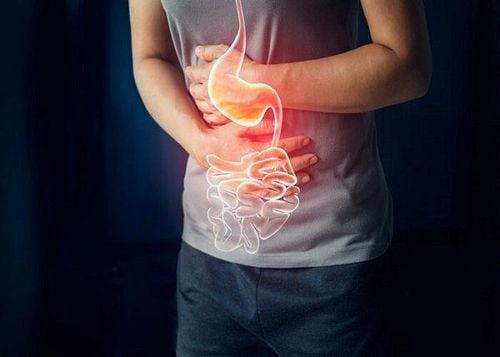This is an automatically translated article.
Chronic pain can persist for so long that medication and even mind-body approaches may not be enough to provide effective pain relief. Up to four out of five people with chronic pain have tried alternatives, including eating certain foods or ingredients that are thought to help with pain. All of the 10 foods below have a place in a healthy diet, so eating and cooking with them is good for you.1. Chronic pain and how to fight it
Statistically, chronic pain affects 116 million American adults. That number equates to more than a third of the population of the United States. Pain relievers can work for many people, but they are addictive and produce dangerous side effects to health. Worse still, the use of pain relievers often does not eliminate the actual cause of the pain.Dr. James N. Dillard, author of The Chronic Pain Solution, said: "No matter how well you prescribe it, people with chronic pain still can't get complete remission. That's a big deal. and doctors, experts and scientists are working every day to solve it, but there's an alternative and it's right there in our kitchens. Certain foods help relieve pain. by fighting inflammation, blocking pain signals and even healing the underlying causes of pain.”
Botanist James A. Duke, author of The Green Pharmacy Guide to Healing Foods, says: “Almost always, if we find pharmaceuticals that do this trick, we will find them. It's a plant that has the same effect and is safer to do. But before you can reap these successes, you must completely eliminate junk food from your diet. The typical western diet focuses heavily on foods that promote inflammation, including highly processed foods and refined carbs.No fruit, vegetable or herb can be soothing. your pain if you don't change your diet to reduce processed foods and increase whole foods.”
This may not be easy, says Dr. Peter Abaci, medical director of the Bay Area Pain and Health Center in Los Gatos, CA. can limit the occurrence of chronic pain" Here are 10 foods that have the ability to fight pain.
2. 10 foods that fight pain
2.1. Cherries Compounds in cherries called anthocyanins - the same phytonutrients that give cherries their rich ruby color - are powerful antioxidants that work in two ways to reduce pain . “They suppress inflammation and inhibit pain-relieving enzymes,” says Dr. like aspirin, naproxen and other non-steroidal anti-inflammatory drugs.” A study in the Journal of Nutrition found that people who ate a plate of cherries for breakfast experienced a 25% reduction in key markers of inflammation. Other researchers found a reduction in muscle pain in runners who drank 350ml of tart cherry juice twice daily for 7 days before a long distance run.
Quả anh đào có thể ngăn chặn tình trạng viêm và ức chế enzym giảm đau
There are many ways to include ginger in one's diet. In Vietnam, ginger is also one of the most popular spices in meals. In addition, people with chronic pain can also make ginger tea by putting sliced, peeled ginger root in boiling water and steeping for 15 minutes. For ginger lemonade, combine grated ginger root, lemon juice, and honey with water.
2.3. Cranberry juice Sores are caused by a bacteria called H. pylori that attacks the protective lining of the stomach or small intestine. Antibiotics are the usual cure, but we can help prevent ulcers in the first place by drinking cranberry juice, thanks to its ability to stop H. pylori bacteria from attaching to the stomach lining. One study found that drinking just one cup of cranberry juice daily for 3 weeks eliminated nearly 20% of all H. pylori infections — without the need for medication. But juices are generally inflammatory when they're high in sugar, so stick with 100% natural cranberry juices. If it's too bitter, add water or a natural sweetener like stevia.
2.4. Salmon, Herring, and Sardines The common feature of these three fishes is that they are low in mercury. Eating fish that's low in mercury and high in omega-3 fatty acids can help ease back pain. In a healthy body, the blood vessels at the edges of the spinal discs transport important nutrients to those discs. Dr. Neal D. Barnard, author of Foods That Fight Pain, says if blood flow is reduced, the discs lose their source of oxygen and other nutrients, so they begin to degenerate. Omega-3 helps to improve blood flow and reduce inflammation in blood vessels and nerves. But for maximum effect, we need to add this fatty acid. A study in the journal Neurosurgery found that taking 1,200 mg or more of EPA and DHA per day can reduce both back and neck pain. Dr. Joseph C. Maroon, lead researcher, said: “Any amount of fish oil is beneficial for cardiovascular protection and improved mood. A study in the journal Pain found that people were more aware of their discomfort when they grimaced. (An added bonus: Omega-3s may also reduce brain shrinkage.)
2.5. Turmeric The indispensable spice of this curry has been used in Ayurvedic medicine for many years to relieve pain and speed up digestion. But researchers are particularly interested in turmeric for another reason: Its anti-inflammatory properties, aided by a substance called curcumin. Turmeric can protect the body from tissue destruction and arthritis, while also protecting good nerve cell function.

Curcumin trong nghệ có đặc tính chống viêm
2.6. Yogurt For about 20% of Americans with irritable bowel syndrome, stomach upset is one of the leading causes. Certain strains of bacteria commonly found in yogurt (especially B. infantis and L. acidophilus) have the ability to reduce pain, inflammation and bloating, according to a 2010 review. Another study also found results. similar to B. lactis But shop smart Not all yogurts contain probiotics Choosing dairy is important Vegetarians can get their daily dose from pea yogurt
2.7 Coffee Coffee is not only a morning drink for many people, it's also a good pain reliever, Dr. Andrew Weil, founder and director "Caffeine helps relieve pain by narrowing the dilated blood vessels that develop that cause headaches," says director of the Arizona Center for Integrative Medicine. Numbness provides pain relief by reducing compounds that promote pain and amplifying the effects of other pain relievers. However, coffee only has an analgesic effect if we do not use it regularly.
2.8. Mint Chewing mint can freshen your breath, but there's another reason we should try this herb. The menthol present in peppermint helps prevent muscle spasms, one of the reasons why menthol is so effective in treating irritable bowel syndrome. Peppermint oil is also very helpful to relieve headaches. Rub a little on your temples or wrists and breathe in the minty scent.
Dr., botanist James A. Duke, author of The Green Medicine Food Guide, recommends brewing mint tea for any kind of pain. Pour boiling water over the mint leaves and steep until the tea is as strong as desired. Add wintergreen leaves for an anti-inflammatory boost. A compound in wintergreen called methyl salicylate blocks enzymes that cause inflammation and pain. “You might as well call it herbal aspirin,” he says.
2.9. Tofu When it comes to the causes of chronic pain, osteoarthritis should be listed first. The wear and tear in the joints - which causes cartilage to tear and bones to come into contact - is irreversible. However, there is hope to mitigate the impact of this situation.

Đậu phụ là một trong những thực phẩm giúp giảm đau
2.10. Hot peppers Similar to the foods listed above, hot peppers can also reduce pain. An ingredient in hot peppers called capsaicin has the ability to reduce pain by stimulating nerve endings and depleting a chemical that transmits pain signals. You can buy creams containing capsaicin at most drugstores, says Duke.
Although topical pain relief is most effective for arthritis, eating hot peppers also offers anti-inflammatory benefits. Duke adds chili to his soup and drizzles chili sauce over his food. The hotter the chili, the more capsaicin it contains. But after handling hot peppers, wash your hands thoroughly.
Chronic pain is no longer a rare condition among adults. In particular, when we consume more sugar than the body can handle, it increases the release of inflammatory compounds, cytokines and can increase inflammatory response proteins. In addition, too much sodium in the diet can lead to water retention, worsening pain. In this case, pain relievers can be effective but have many potential side effects, so changing the diet with certain foods that work against the pain is the method many experts prefer. recommended to apply.
Please dial HOTLINE for more information or register for an appointment HERE. Download MyVinmec app to make appointments faster and to manage your bookings easily.
Reference sources: webmd.com, prevention.com












